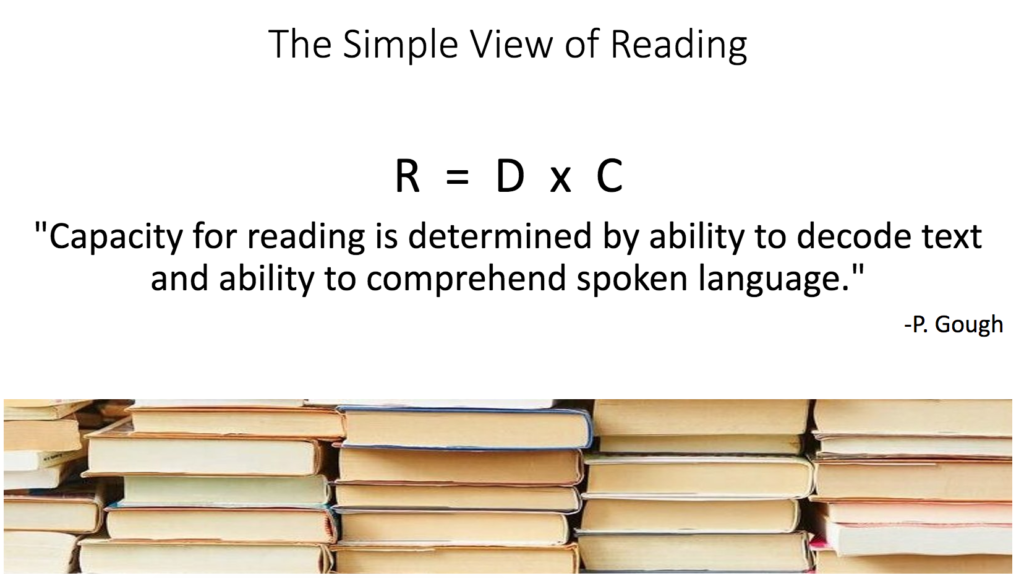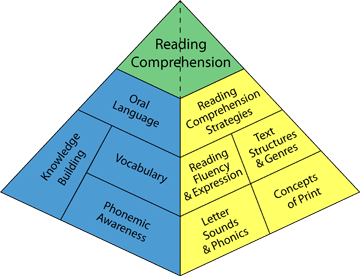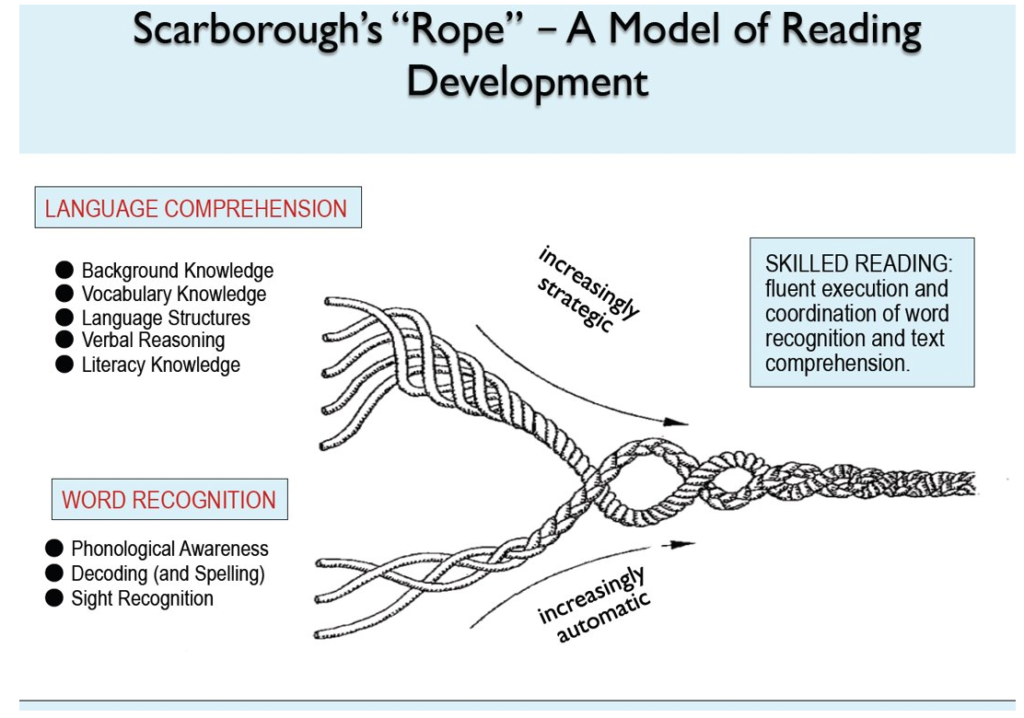
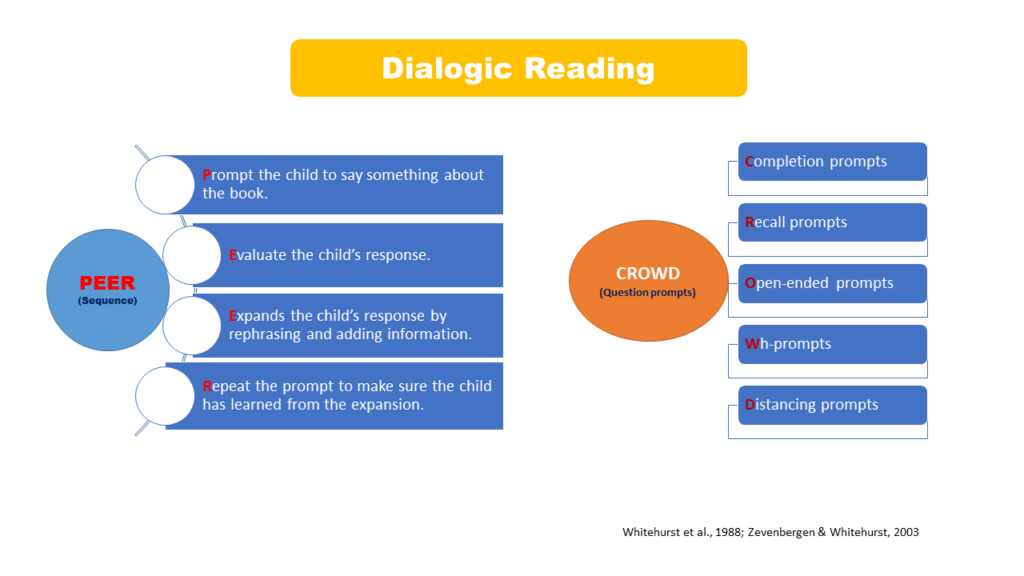
DIALOGIC READING
Dialogic Reading (DR), first described by Whitehurst and colleagues (1988), is a particular type of shared reading in which the adult uses strategic questioning and responding to children to engage the child actively in verbal and non-verbal interactions during shared reading. DR is based on the assumption that practice, feedback, and appropriate scaffolded adult-child interactions facilitate language development (Zevenbergen & Whitehurst, 2003). Read more.
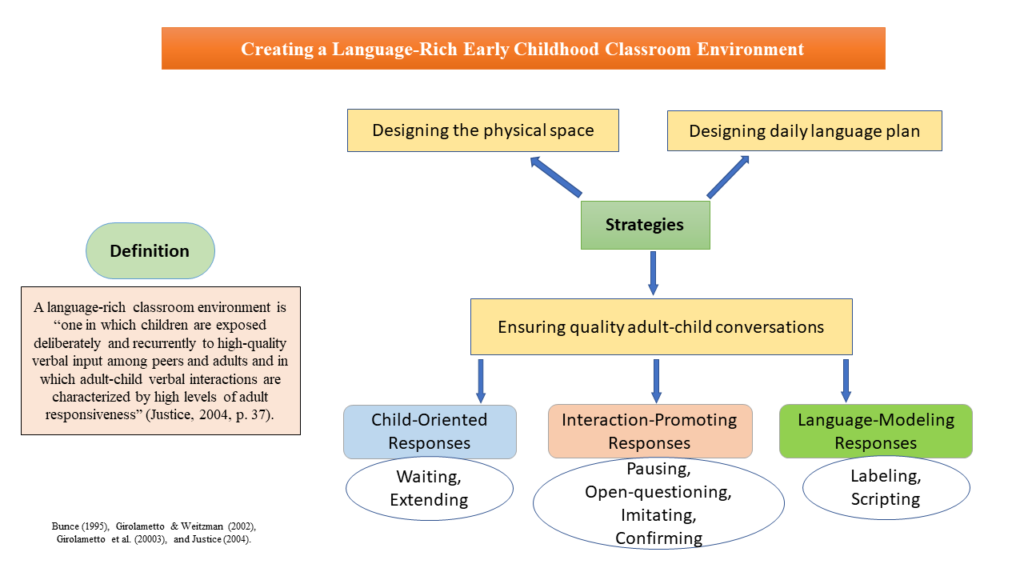
CREATING A LANGUAGE-RICH ENVIRONMENT
Language development in early years is of significance to children’s literacy development and their abilities to navigate their environment and interact with others. One way for educators to support young children’s language development is to create a language-rich classroom environment. This short essay discusses what is a language-rich classroom environment and what strategies can be used to create a language-rich classroom environment. Read more.

STRUCTURED LITERACY IN A FULL DAY KINDERGARTEN PROGRAM
There is a significant shift occurring in Ontario’s education system as a result of a report released by the Ontario Human Rights Commission (OHRC, 2022). The Science of Reading (SoR) is the research that “provides us with the information we need to gain a deeper understanding of how we learn to read, what skills are involved, how they work together, and which parts of the brain are responsible for reading development” (Ordetx, 2021). While the research has been around for decades, the Ministry of Education in Ontario has recently been made aware of the need to change the way students are learning to read (OHRC, 2022). Read more
